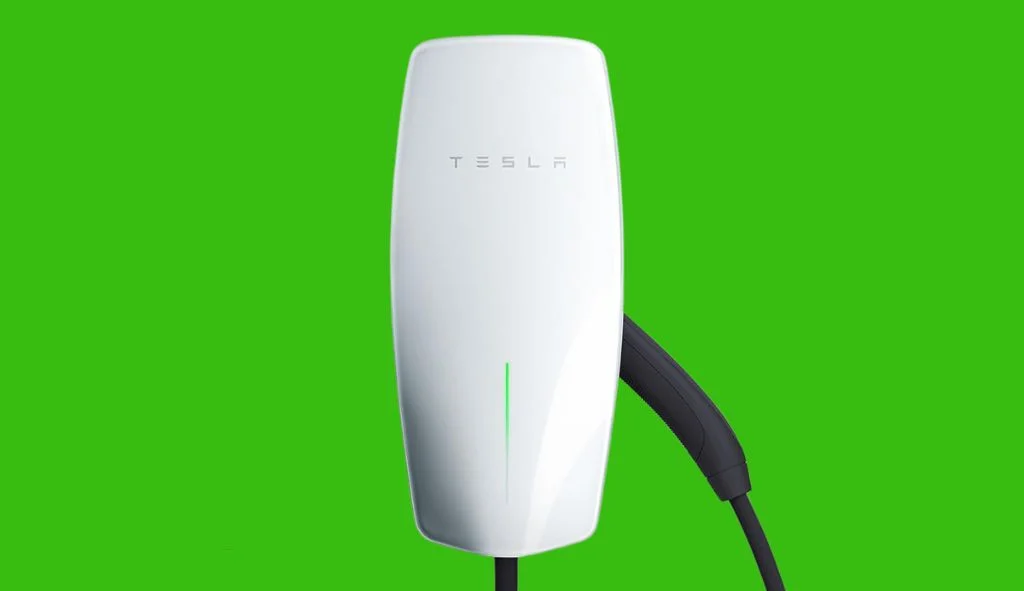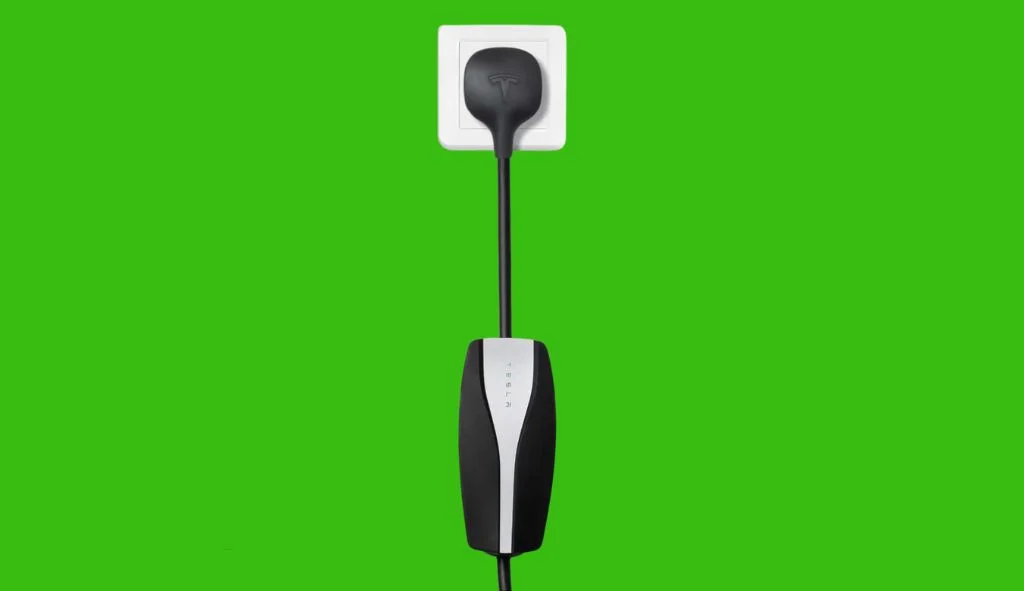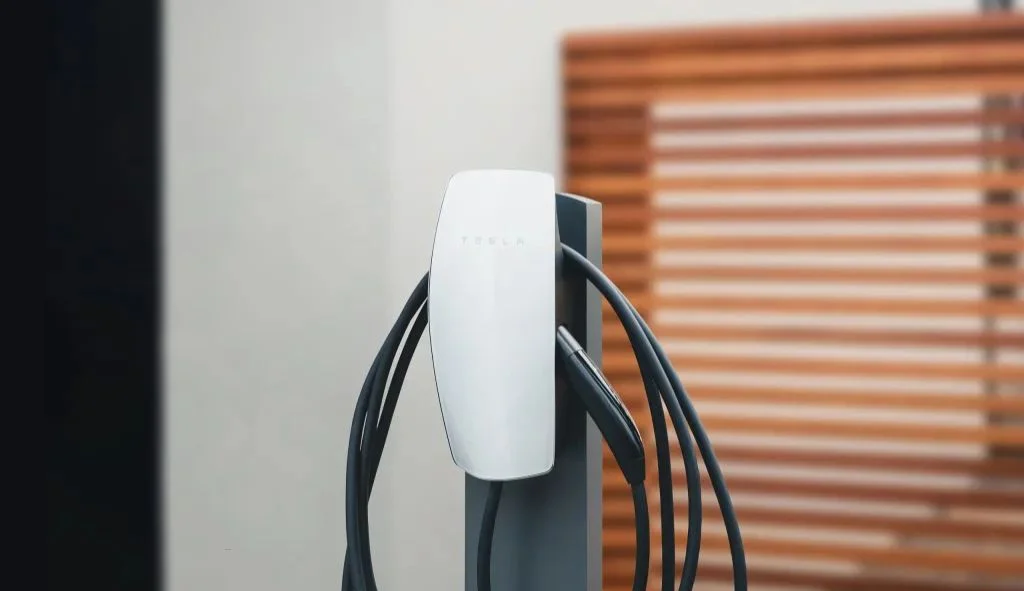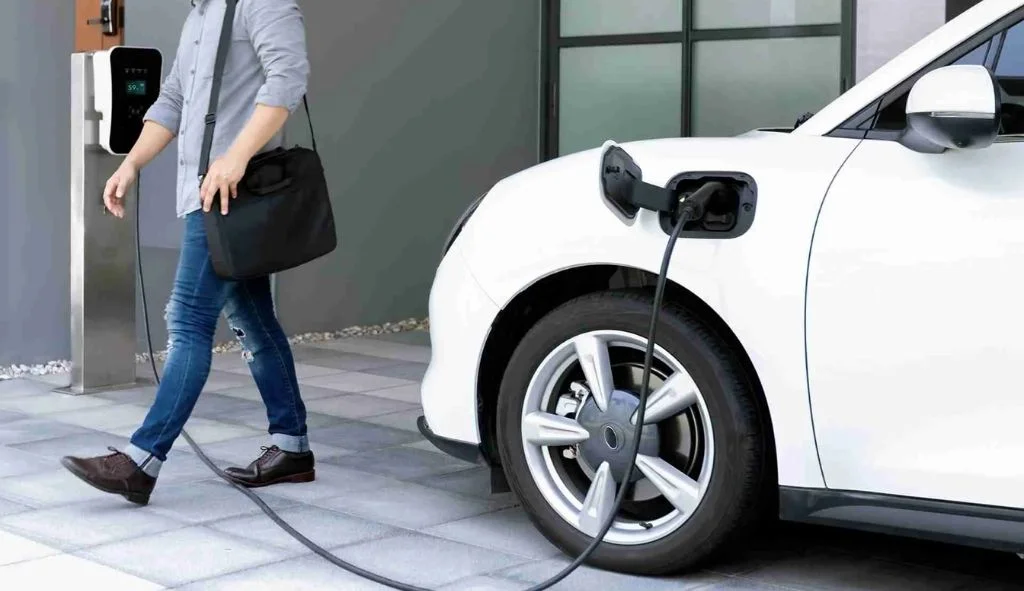Tesla Wall Connector provides faster charging (up to 44 miles/hour) with professional installation, while Mobile Connector offers portability and flexibility with lower speeds (up to 30 miles/hour) at a lower cost.
Understanding Tesla Home Charging Options
Home charging is one of the biggest advantages of owning a Tesla. Instead of visiting gas stations, Tesla owners can conveniently charge their vehicles at home. However, choosing the right charging solution requires understanding the available options and their respective benefits. Tesla offers two primary home charging solutions: the Wall Connector and the Mobile Connector. Each has distinct features that make them suitable for different users and scenarios.
Home charging transforms the electric vehicle ownership experience. With a reliable home charging setup, Tesla owners can start each day with a fully charged battery. This eliminates range anxiety and reduces dependence on public charging stations. Additionally, charging at home often costs less than using public charging infrastructure, resulting in significant savings over time.
Tesla Wall Connector: Features and Specifications

The Tesla Wall Connector is a dedicated Level 2 home charging unit designed to be mounted on a wall, typically in a garage or driveway area. It represents Tesla’s premium home charging solution with advanced features and capabilities.
Charging Speed and Power Output
The Wall Connector delivers impressive charging speeds, adding up to 44 miles of range per hour at 11.5 kW with a 48-amp output. This speed varies slightly depending on the Tesla model but remains significantly faster than standard charging options. The high power output makes it possible to fully charge most Tesla vehicles overnight, ensuring they’re ready for use each morning.
Installation Requirements
The Wall Connector requires professional installation by a qualified electrician. It must be hardwired directly to your home’s electrical panel, which adds to the initial setup cost but provides a more permanent and reliable charging solution. Tesla has a network of certified installers who can properly set up the Wall Connector according to local electrical codes and safety standards.
Wi-Fi Connectivity and Smart Features
One of the standout features of the Wall Connector is its Wi-Fi connectivity. This enables several smart functions:
- Over-the-air firmware updates that improve functionality over time
- Remote diagnostics for troubleshooting
- Power management features for homes with multiple Tesla vehicles
- Integration with the Tesla app for monitoring and scheduling charging sessions
Design and Durability
The Wall Connector features a sleek, modern design that complements Tesla vehicles. It’s built for both indoor and outdoor installation with weather-resistant construction. The unit comes with a 24-foot cable, providing ample reach to connect to your vehicle regardless of parking orientation. Tesla backs the Wall Connector with a four-year warranty for residential use, underlining its durability and reliability.
Tesla Mobile Connector: Features and Specifications

The Tesla Mobile Connector represents a more portable and flexible charging solution. It’s designed to work with various outlet types, making it versatile for different charging scenarios.
Portability and Versatility
The primary advantage of the Mobile Connector is its portability. It can be stored in your vehicle’s trunk for charging on the go or used as a home charging solution. This flexibility makes it particularly valuable for Tesla owners who travel frequently or don’t have a permanent parking spot.
Charging Speed Options
The Mobile Connector’s charging speed depends on the outlet type it’s connected to:
- Standard household outlet (NEMA 5-15, 120V): Up to 3-6 miles of range per hour, depending on the Tesla model
- 240V outlet (NEMA 14-50): Up to 30 miles of range per hour
While slower than the Wall Connector, the Mobile Connector provides adequate charging for many users, especially those who drive shorter distances daily or have longer overnight charging periods available.
Adapter Compatibility
The current Mobile Connector bundle includes adapters for standard household outlets (NEMA 5-15) and 240V/50 amp outlets (NEMA 14-50). Additional adapters can be purchased separately to expand compatibility with different outlet types. This adaptability allows the Mobile Connector to work in various locations and situations.
Design and Functionality
The Mobile Connector features a practical design focused on functionality and ease of use. It includes a 20-foot cable length, providing good reach from outlets to your vehicle. The package comes with a cable organizing bag for neat storage when not in use. While lacking the smart features of the Wall Connector, its straightforward operation makes it accessible for all Tesla owners.
Wall Connector vs Mobile Connector: Direct Comparison
Understanding the key differences between these two charging options helps in making an informed decision based on individual needs and circumstances.
Charging Speed Comparison
The most significant difference between the two connectors is charging speed:
- Wall Connector: Up to 44 miles of range per hour (11.5 kW)
- Mobile Connector: Up to 30 miles of range per hour with a 240V outlet, or as little as 3 miles per hour with a standard household outlet
For context, this means the Wall Connector can add approximately 352 miles of range in an 8-hour overnight charging session, while the Mobile Connector on a 240V outlet would add about 240 miles in the same period.
Installation and Setup Differences
The installation requirements create a clear distinction between these options:
- Wall Connector: Requires professional installation by a qualified electrician, involving hardwiring to your electrical panel and wall mounting
- Mobile Connector: Plug-and-play solution that requires no installation, though you may need to install a 240V outlet for faster charging
This difference affects not only the initial setup process but also the permanence of your charging solution.
Cost Comparison
The total cost consideration includes both the device price and installation:
- Wall Connector: $420 for the unit itself, plus installation costs that typically range from $500-$1,500 depending on your home’s electrical setup
- Mobile Connector: Approximately $300 for the bundle with included adapters
For many users, the total cost difference can be substantial, especially if significant electrical upgrades are needed for the Wall Connector installation.
Smart Features and Connectivity
The technological capabilities differ significantly between the two options:
- Wall Connector: Wi-Fi connectivity, over-the-air updates, power sharing capabilities between multiple connectors, and Tesla app integration
- Mobile Connector: No smart features or connectivity options, offering basic charging functionality only
For tech-savvy users or those with multiple Tesla vehicles, the Wall Connector’s smart features provide valuable additional functionality.
When to Choose the Wall Connector
The Wall Connector represents the premium Tesla home charging solution, but it’s particularly well-suited for specific situations and user needs.
For High Mileage Drivers
If you regularly drive long distances and need to recharge your Tesla quickly between trips, the Wall Connector’s faster charging rate makes it the superior choice. Adding up to 44 miles of range per hour means less waiting time and more driving time.
For Multi-Tesla Households
Homes with multiple Tesla vehicles benefit significantly from the Wall Connector’s power-sharing capabilities. Multiple Wall Connectors can communicate with each other to distribute available electrical capacity efficiently, ensuring all vehicles get charged without overloading your home’s electrical system.
For Permanent Home Installations
If you own your home and plan to stay there long-term, the Wall Connector provides a permanent, elegant charging solution that can even increase your property value. Its clean installation with hidden wiring creates a professional appearance in your garage or driveway.
For Those Who Value Convenience
The Wall Connector offers a “set-it-and-forget-it” charging experience. The permanent installation with a fixed cable means you simply grab the connector and plug it in-no need to retrieve a portable charger, unwind cables, or connect adapters each time.
When to Choose the Mobile Connector
The Mobile Connector offers specific advantages that make it the better choice in several scenarios.
For Renters or Those Planning to Move
If you rent your home or plan to move in the near future, the Mobile Connector’s portability makes it the logical choice. You can take it with you when you relocate without leaving behind an expensive installed charging system.
For Occasional or Low-Mileage Drivers
Drivers who cover fewer daily miles or use their Tesla less frequently may find the Mobile Connector completely adequate. If you typically need to add only 20-30 miles of range overnight, the Mobile Connector on a 240V outlet can easily meet your needs.
For Travel and Emergency Backup
The Mobile Connector serves as both a home charging solution and a travel companion. Keeping it in your vehicle ensures you can charge at various locations during road trips or in emergency situations when you need to add some range at a friend’s house or another location with an available outlet.
For Budget-Conscious Buyers
If you already have a suitable 240V outlet or can have one installed relatively inexpensively, the Mobile Connector represents the more economical choice. The significantly lower total cost makes it attractive for those wanting to minimize their initial investment in charging infrastructure.
Cost Analysis: Understanding the Full Financial Picture
Making a financially sound decision requires considering both immediate and long-term costs associated with each charging option.
Initial Purchase and Installation Costs
The upfront costs differ substantially:
- Wall Connector: $420 for the unit
- Mobile Connector: Approximately $300 for the complete bundle
However, the installation costs create an even larger gap:
- Wall Connector installation: Typically $500-$1,500 depending on your home’s electrical setup and local labor rates
- Mobile Connector installation: $0 for the connector itself, though installing a 240V outlet may cost $200-$500 if one isn’t already available
Long-Term Value Considerations
Despite higher initial costs, the Wall Connector may offer better long-term value for certain users:
- Home value increase: A properly installed Wall Connector can be viewed as a home improvement that appeals to future buyers if you sell your property
- Reliability: The fixed installation typically provides more consistent performance over time
- Convenience value: The time saved with faster charging and easier connection has real value for busy Tesla owners
For others, the Mobile Connector’s flexibility may represent better long-term value, particularly if you might change vehicles or relocate in the future.
User Experiences and Real-World Feedback
Understanding how other Tesla owners use these charging options can provide valuable insights for your decision.
Wall Connector User Experiences
Tesla owners who have installed the Wall Connector frequently cite convenience and reliability as key benefits. The ability to simply plug in each night without handling equipment or adapters creates a seamless charging experience. Users also appreciate the faster charging speeds, particularly when they need to make multiple trips in a day or have unexpected driving needs arise.
Many Wall Connector users report satisfaction with the app integration, which allows them to monitor charging progress and costs from anywhere. The clean, professional appearance of the installation is another commonly mentioned positive aspect.
Mobile Connector User Experiences
Mobile Connector users value the flexibility above all. The ability to charge at various locations-from friends’ homes to vacation rentals-provides peace of mind during travel. Many users report keeping the Mobile Connector in their Tesla at all times, even if they have a Wall Connector at home, for emergency situations.
Users who rent or move frequently appreciate not having to leave behind an expensive charging setup. Additionally, those with simple charging needs find the Mobile Connector perfectly adequate for adding sufficient range overnight.
Compatibility with Tesla Models
Both charging options work with all Tesla models, but there are some model-specific considerations to keep in mind.
Model-Specific Charging Rates
The charging rates vary slightly depending on the Tesla model:
For the Wall Connector (up to 44 miles of range per hour):
- Model 3: Approximately 44 miles per hour
- Model Y: Approximately 42 miles per hour
- Model S: Approximately 34 miles per hour
- Model X: Approximately 30 miles per hour due to higher energy consumption
For the Mobile Connector with NEMA 14-50 (240V):
- Model 3: Approximately 30 miles per hour
- Model Y: Approximately 27 miles per hour
- Model S: Approximately 27 miles per hour
- Model X: Approximately 23 miles per hour
Battery Size Considerations
Tesla models with larger battery packs take longer to charge from empty to full, regardless of which connector you use. For example:
- A Model 3 Standard Range (60 kWh battery) might charge from 10% to 90% in about 6-7 hours using a Wall Connector
- A Model X Long Range (100 kWh battery) might take 9-10 hours for the same percentage change
This difference in total charging time may influence which connector makes more sense for your specific Tesla model.
Future-Proofing Your Tesla Charging Setup
When investing in home charging infrastructure, considering future needs and technological developments helps ensure your setup remains valuable for years to come.
Evolving Charging Technology
Tesla regularly updates both hardware and software for its charging equipment. The Wall Connector’s Wi-Fi capability allows it to receive these updates automatically, potentially gaining new features or improved performance over time. The Mobile Connector lacks this capability but can be replaced more easily if significant technological advances occur.
Changing Vehicle Needs
Your vehicle needs may change over time. You might:
- Add another Tesla to your household
- Upgrade to a different Tesla model with different charging requirements
- Switch to another electric vehicle brand altogether
The Wall Connector now supports non-Tesla vehicles with the appropriate adapter, making it somewhat future-proof across brands. The Mobile Connector’s portability means you can simply take it with you if you change vehicles or living situations.
Using Both Connectors: The Best of Both Worlds
Many Tesla owners find that having access to both charging options provides maximum flexibility and convenience.
The Dual-Connector Strategy
Some Tesla owners install a Wall Connector at home for daily charging but keep a Mobile Connector in their vehicle for travel and emergencies. This approach offers several advantages:
- Fast, convenient charging at home with the Wall Connector
- Charging capability anywhere with accessible outlets while traveling
- Backup charging option if one system experiences problems
- Ability to charge at friends’ or family members’ homes during visits
Cost-Effectiveness of the Dual Approach
While purchasing both connectors requires a higher initial investment, the added flexibility and peace of mind may justify the expense for many Tesla owners. The Mobile Connector serves as both a backup and travel solution, while the Wall Connector provides the optimal daily charging experience.
Frequently Asked Questions
What is the main difference between the Tesla Wall Connector and Mobile Connector?
The main differences are charging speed, installation requirements, and portability. The Wall Connector charges faster (up to 44 miles of range per hour) but requires professional installation, while the Mobile Connector is portable and plugs into various outlets but charges slower (up to 30 miles per hour on 240V).
Can I use the Mobile Connector as my primary home charger?
Yes, many Tesla owners use the Mobile Connector as their primary home charger, especially when connected to a 240V outlet like a NEMA 14-50. It provides sufficient charging for most daily driving needs, though it’s slower than the Wall Connector.
Do I need an electrician to install either charging option?
You need an electrician to install the Wall Connector as it must be hardwired to your electrical panel. For the Mobile Connector, you don’t need an electrician for the device itself, but you might need one to install a 240V outlet if you don’t already have a suitable one.
Can the Wall Connector charge non-Tesla electric vehicles?
Yes, Tesla now offers a Universal Wall Connector that works with non-Tesla EVs using the same charging speed and functionality as the standard Wall Connector.
How much does it cost to charge a Tesla at home?
The cost depends on your local electricity rates and your Tesla model. At the national average of about $0.15 per kWh, charging a Tesla Model 3 from empty to full might cost approximately $9-12, while a Model X might cost $15-20.
Can I install multiple Wall Connectors for multiple Tesla vehicles?
Yes, multiple Wall Connectors can be installed and will communicate with each other to share power efficiently. This power-sharing feature ensures your home’s electrical capacity isn’t exceeded while charging multiple vehicles.
Which One To Choose: Tesla Mobile Or Wall Connector?
Choosing between the Tesla Wall Connector and Mobile Connector comes down to your specific needs, living situation, and driving habits. The Wall Connector offers faster charging speeds, smart features, and a permanent installation that creates a seamless charging experience. It’s ideal for homeowners who drive frequently and value convenience and speed.
The Mobile Connector provides flexibility, portability, and a lower initial cost. It’s perfect for renters, those who move frequently, or drivers with more modest daily charging requirements. Many Tesla owners find that having both options available gives them the best coverage for all scenarios.


